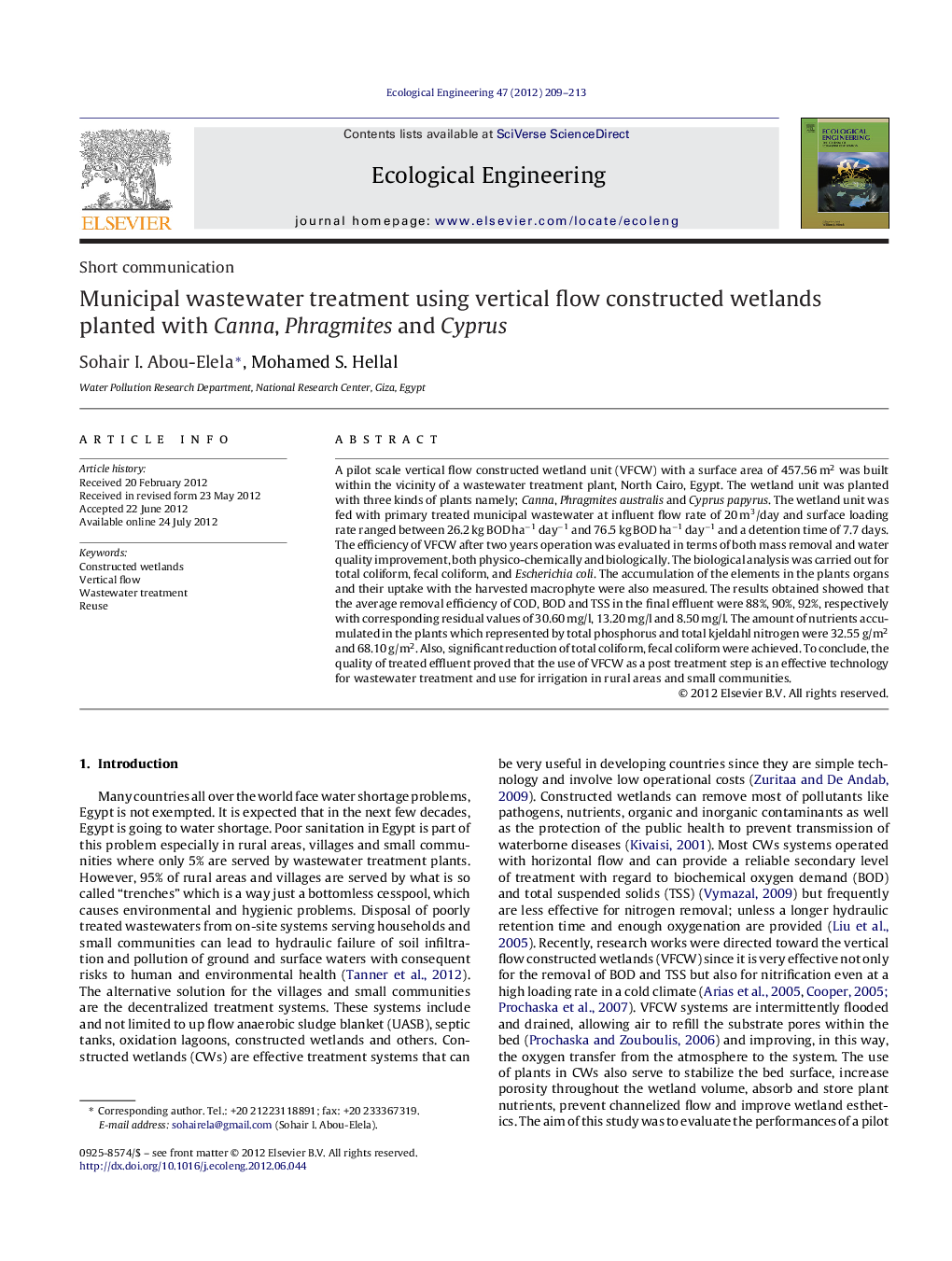| Article ID | Journal | Published Year | Pages | File Type |
|---|---|---|---|---|
| 4390021 | Ecological Engineering | 2012 | 5 Pages |
Abstract
A pilot scale vertical flow constructed wetland unit (VFCW) with a surface area of 457.56 m2 was built within the vicinity of a wastewater treatment plant, North Cairo, Egypt. The wetland unit was planted with three kinds of plants namely; Canna, Phragmites australis and Cyprus papyrus. The wetland unit was fed with primary treated municipal wastewater at influent flow rate of 20 m3/day and surface loading rate ranged between 26.2 kg BOD haâ1 dayâ1 and 76.5 kg BOD haâ1 dayâ1 and a detention time of 7.7 days. The efficiency of VFCW after two years operation was evaluated in terms of both mass removal and water quality improvement, both physico-chemically and biologically. The biological analysis was carried out for total coliform, fecal coliform, and Escherichia coli. The accumulation of the elements in the plants organs and their uptake with the harvested macrophyte were also measured. The results obtained showed that the average removal efficiency of COD, BOD and TSS in the final effluent were 88%, 90%, 92%, respectively with corresponding residual values of 30.60 mg/l, 13.20 mg/l and 8.50 mg/l. The amount of nutrients accumulated in the plants which represented by total phosphorus and total kjeldahl nitrogen were 32.55 g/m2 and 68.10 g/m2. Also, significant reduction of total coliform, fecal coliform were achieved. To conclude, the quality of treated effluent proved that the use of VFCW as a post treatment step is an effective technology for wastewater treatment and use for irrigation in rural areas and small communities.
Related Topics
Life Sciences
Agricultural and Biological Sciences
Ecology, Evolution, Behavior and Systematics
Authors
Sohair I. Abou-Elela, Mohamed S. Hellal,
